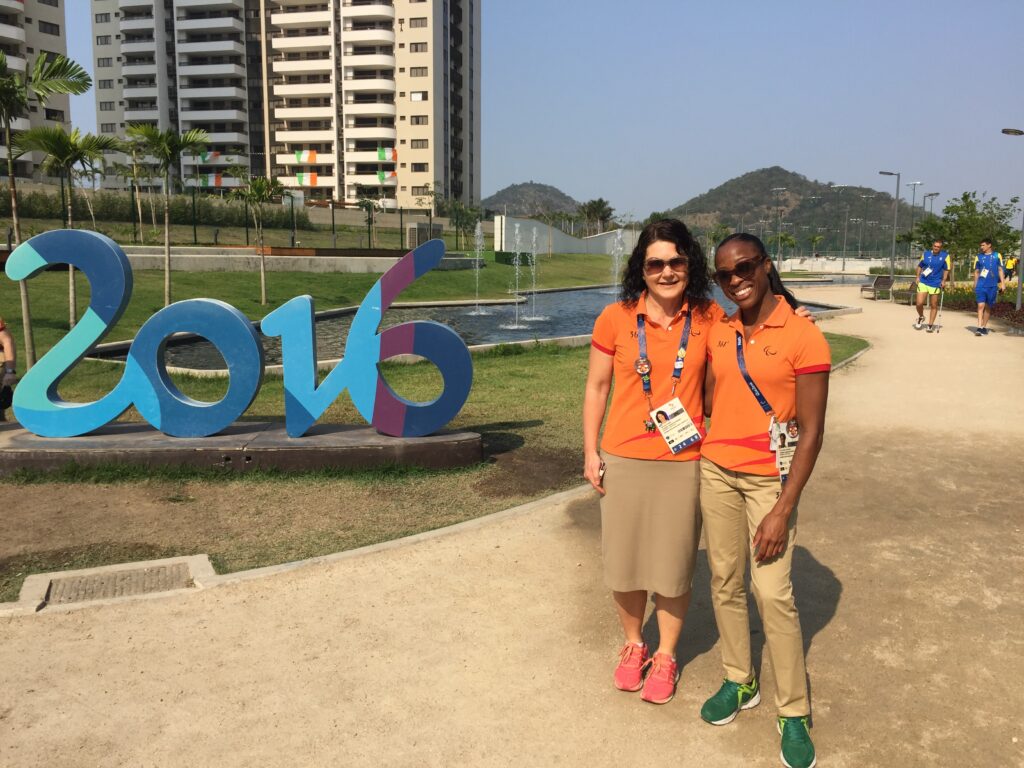Tell us more about yourself
You rarely get to work with colleagues who are also good friends that you deeply respect. That characterizes our team. Each co-author has an almost unreal intellectual capacity (I swear Ioanna is actually a computer who plugs herself in at night), but beyond smarts, we also have a genuine concern for each other. And we show that concern in different ways. Katharina has been closer to me than a sister since Rio 2016. Natalie and I can’t have a phone call without laugh-until-you-cry moments. We all felt like we’d won an Olympic gold medal when Demetri got into his PhD program. And when we struggled to get survey respondents, Margo calmed our nerves by rallying her professional network like she runs a public relations firm. We come from very different professional backgrounds—human rights, medicine, public health, social science, biostatistics—which makes for a nice mosaic of insights during each meeting. And we are also inter-generational. Margo has worked in this space for some time, and Katharina is an integrity expert, while Sheree, Nat, Ioanna, and I bring newer voices to the conversation. As the team’s youngest member, Demetri brings the fresh perspective of a young scholar-athlete. He also holds us all together with a saint’s diplomacy and quiet confidence (he’s starting his PhD this fall, but Demetri may also secretly have a degree in cat-herding, which takes serious skill).

What is the story behind your study?
Natalie and I were at a closed-door 2-day meeting in New York City a few years back (she invited me, and anything she asks me to do, I do because I know it’ll be Natalie-level brilliant). The topic of protecting athletes’ rights came up, and four current and retired athletes were there. We all gave powerful speeches and made insightful comments, but during a coffee break, Natalie leaned over to me and kind of whispered, “yeah, ok, this all sounds really good, but do you think athletes know their rights? I know I didn’t.” I went quiet for a beat and thought back to my training days. I whispered back to her, “No. I definitely didn’t have any clue. And even if I did know, what would I do with them?” That was the palpable ‘Aha’ moment for me. I knew we had a study on our hands. When I returned to New Haven, I immediately called Sheree because Sheree is my moon-shot colleague who doesn’t mind taking big academic risks. She and I immediately started brainstorming how to create and validate a short (I think we use the word “punchy” a few times) survey instruments to accurately test athletes’ knowledge of and belief in their rights in the sports context. We returned with Nat, consulted with survey design experts in New Haven, and were off to the races. The key was differentiating knowledge from beliefs (or, more formally, attitudes and beliefs). They are different. They are why I said to Natalie that day, “…even if I did know, what would I do with them?” meaning, did I have the confidence and safety to act upon that knowledge? Knowledge and applied knowledge are two different things.
In your own words, what did you find?
First, we proved that what Natalie and I instinctively suspected in New York City is probably true. The social dynamics of the training group, the pressure to perform during a precariously finite period of time, the love and passion for sports that overwhelms almost everything else, the unwritten rules of being a woman in sport and society, etc., all of those forces play into an athlete’s ability to fully embody and act on their rights in real-life sports settings. Our data showed a major disconnect between athletes’ knowledge of their rights in sport and their belief/confidence in their ability to act on those rights in sport. That confidence is lowest for girls/women across sports. Additionally, there are nuances around an athlete’s confidence in defending their rights based on disability and union membership status, but you’ve got to read the full paper for those details.
What was the main challenge you faced in your study?
Thinking about how to categorize the data once we had it. Sports categories were a big deal. Some sports have individual and team components (track and field, rowing), while others emphasise aesthetics and subjective judging (artistic swimming, gymnastics). We tried many different models and iterated a lot based on the extant literature and on what we felt were important findings. Deciding which stories not to tell was harder and more controversial for the group than deciding which stories to tell. The question of how to (and how not to) categorize the sports and athletes definitely leads to the longest and most spirited internal email threads.
If there is one take-home message from your study, what would that be?
Athletes are more vulnerable than they may appear. Yes, every human being has an inherent degree of agency, and we are each entitled to the full slate of freedoms afforded all of us in theory. But in reality, incredibly complex social forces shape an athlete’s day-to-day life as they train and compete to perform at their best. These forces are no joke. They are powerful. They influence intra- and inter-personal relationship dynamics, ultimately making any question about rights and safety in sport a bit more complex and layered than you might think at first glance—just like athletes. There is more than meets the eye.